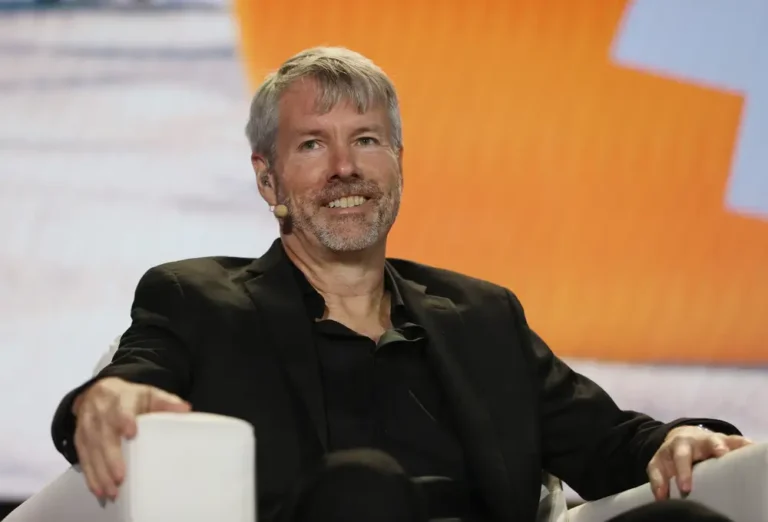A 27-year-old investor building a retirement portfolio of $2 million in 8 years shares why he’s heavily buying a fund paying a 12% annualized yield on a monthly basis with tax advantages

- Austin Hankwitz is challenging himself to build a $2 million retirement portfolio.
- His strategy includes using dividends and distribution yields to compound his growth.
- One of which is an ETF with an options strategy that pays a yields on its premiums.
Before creating personal finance content on social media platforms in 2020, Austin Hankwitz worked as a financial analyst at Medicis, a healthcare company. He currently has over 700,000 followers on TikTok alone.
During the pandemic lockdowns, his short videos that break down investing concepts and share stock ideas that could make for good investment opportunities drew a lot of attention from young retail investors.
At the beginning of the year, he decided to set a goal for himself and invite his followers to join him on the journey. It was to build a $2 million investment portfolio over the course of eight years, with the possibility of taking up to fifteen years.
However, meeting that timeframe would necessitate investing $10,000 to $15,000 per month, a significant investment that would also necessitate taking on more risk and seeking faster growth. His current source of revenue is his creator business, which includes newsletter subscribers, sponsored videos, consulting, and his podcast. His annual income for this year is expected to be $500,000.
On December 23, 2022, he published his plan on his Substack with the intention of putting it into action in January. According to records reviewed by Insider, he currently has $59,750 in a brokerage account and $72,774 in a retirement account. They are worth a total of $132,524 when purchased together. Before beginning the challenge in January, he had $2,822 in the account.
The options compound effect
Dividend growth stocks such as Broadcom (AVGO), Lowe’s (LOW), Visa (V), and MasterCard (MA) make up a portion of his portfolio. He believes these securities could accelerate his returns because they benefit from both rising share prices and dividend payments. He also uses DRIP, which stands for dividend reinvestment plan. Simply put, dividends are reinvested to purchase additional shares, resulting in a compounding effect.
While looking for yields, Hankwitz came across the NEOS S&P 500 High Income ETF (SPYI). It was launched in August 2022 and has an annual distribution of 12.10% calculated by taking the fund’s most recent monthly distribution, multiplying it by 12, and then dividing it by the fund’s net asset value.
Not only did he think the yield was appealing, but the monthly frequency of distributions allowed the fund to compound faster, resulting in a higher overall return. It’s also appealing to those who want to supplement their regular income, according to Hankwitz.
It is not a traditional ETF that simply holds a portfolio of stocks. Instead, it is long the entire S&P 500, or SPX, which allows it to track equity returns while also trading call options on the index. This means that the buyer, for example, pays a premium for the right to buy SPX shares at a specific price known as the strike price by a specific date known as the expiration. Premium income is distributed to SPYI shareholders and can be used to purchase out-of-the-money calls. The options contracts last six to seven weeks but are terminated after four weeks, allowing them to roll over every month.
“Normally, you’ll see anywhere between 2 and 4% for most of these dividend stocks,” Hankwitz said. “My eyes were wide open when I saw 12%.” “Oh my gosh, how are they doing this?” I thought.
According to Troy Cates, portfolio manager for SPYI, the goal was to be able to issue a yearly payout of 10 to 12% from contract premiums and dividends from the underlying equities while providing enough appreciation within the portfolio. However, Cates stressed that this is not a hedge when the market is flat to down. In other words, the ETF will fall, but it will outperform the S&P 500 in terms of the monthly premium it generates. He added that in good months, it should be able to recoup a lot of those gains and regain what it lost in the previous months.
Aside from the high yield, Hankwitz likes that SPYI tracks the total return of the S&P 500 index, which includes the best-performing US stocks. Stocks are chosen by comparable high-yielding covered-call ETFs, such as the JPMorgan Equity Premium Income ETF (JEPI). JEPI, which debuted in May 2020, trades out-of-the-money S&P 500 Index call options and has a 12-month rolling dividend yield of 11.04%. It is, however, made up of 137 stocks chosen by portfolio managers. The advantage is that it has a lower expense ratio of 0.35% compared to SPYI’s 0.68%.
“Don’t get me wrong: I applaud them. “I hope the stocks outperform the market,” said Hankwitz of JEPI’s strategy. “However, as a long-term investor, I do want that deep exposure to the S&P 500.” So that’s why I like SPYI so much: they hold all of the names in the S&P 500, an index we know will appreciate over time.”
Global X S&P 500 Covered Call ETF (XYLD) is a comparable fund that invests in S&P 500 stocks. It has been around since 2013 and has a distribution yield of 11.12%. It has a 0.60% expense ratio. According to Hankwitz, XYLD writes at-the-money covered calls, which means their strike prices are at or near market value. This severely limits their upside, he claims.
The graph below compares all three ETFs using $10,000 invested since August 2022. The information was obtained from JP Morgan’s investment comparison page.
The tax implications are the second reason Hankwitz likes SPYI. Because it is a distribution yield rather than a dividend, it is taxed as a capital gain. The ETF follows the Internal Revenue Service (IRS) Section 1256 rules, which tax capital gains at 60% for long-term investments and 40% for short-term investments. Ordinary dividends are taxed as income, so the amount owed varies depending on an investor’s income bracket.
Hankwitz points out that because this ETF is new and actively managed, there isn’t much historical data to analyze.
“The reason I want to jump in on SPYI quickly, despite the lack of years of performance,” Hankwitz explained, “is that I noticed with names like JEPI and XYLD and some of these others that their underlying net asset value called the NAV seem to decrease over time, which as a dividend investor really upset me and is not something I want in my portfolio.” “And I realized why is because they write those at-the-money covered calls, which limit their upside and deduct from the net asset value of their funds as they pay out these distributions.”
Any investor considering a higher-yielding product should be aware that it is usually accompanied by greater risk, according to Cates. While it pays a similar yield to a fixed income product, it is not the same as a risk-free Treasury bill.
“We’ve talked to a lot of advisors who still use this type of product in some of their retirees’ accounts, whether it’s ours or a competitor,” Cates said. “Because people are living much longer lives now, even at 65 or 70.” They want to ensure that their money continues to grow. So they might look at it and say, ‘I’m willing to take some equity risk to get that 10 to 12% yield.'”






